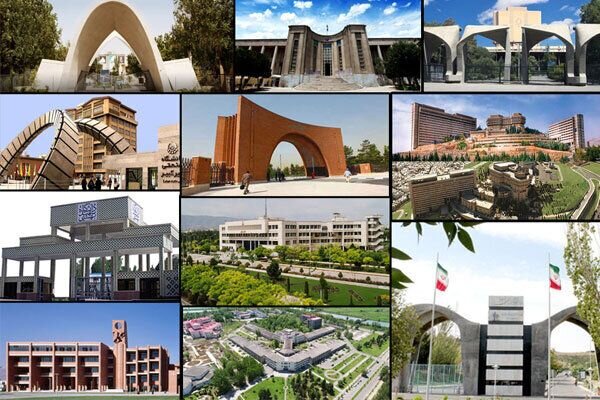ISC WUR includes more Iranian universities

TEHRAN – The Islamic World Science Citation Center (ISC) has released the World University Rankings (WUR) 2024 report, which includes 69 Iranian universities compared to 63 in 2022.
A total of 377 universities from 29 Islamic countries are listed in the ranking, where Turkey with 93 universities and Iran with 69 universities ranked first and second respectively, Mehr news agency reported.
Among the top universities of Islamic countries, Saudi Arabia ranks 107, Qatar ranks 351- 400, Lebanon, Pakistan and the UAE rank 451-500, Iran, Egypt, and Malaysia rank 501-600.
In the ISC WUR 2023, there are 2,555 universities from 114 countries and 6 continents in the global ranking.
ISC WUR is one of the ranking systems that started ranking universities for the first time in 2018 by the ISC Ranking Department with the aim of evaluating the universities of the country as well as Islamic countries at the world level.
The ranking of the world's universities by ISC is done without self-declaration of the universities, and based on this, a reliable database of the ranking of the world's universities has been formed in this organization over 5 years, which is a reliable source for research policies and drawing a road map to guide the universities of Iran and other Islamic countries towards It is a world-class university.
To rank the world universities in its criteria, ISC considers the most important mission of universities which are research (60%), education (10%), international activities (15%), technology and innovation (15%), and then evaluates universities.
Besides, the number of university retractions is calculated with a negative score, which is included in a criteria called Negative Reputation.
In the ISC World University Ranking, universities that have published at least 850 documents in Web of Science 2018-2020 will be considered. The information on this ranking is collected from USPTO, WOS, and InCites.
In the ISC 2023 global ranking, Harvard University, Massachusetts Institute of Technology (MIT), and Stanford University are ranked first to third.
Other rankings in ISC
On December 26, 2023, the ISC released a report, ranking 115 governmental and 17 non-governmental universities according to six indices
Education counts for 30 percent, Research counts for 25 percent, Technology and Innovation counts for 20 percent, International Outlook counts for 10 percent, and Social Services, Infrastructure, and Facilities counts for 5 percent, ISNA quoted the ISC head Ahmad Fazelzadeh as saying.
The universities of Tehran, Fardowsi of Mashhad, Tarbiat Modarres, Shahid Beheshti, and Shiraz were placed first to fifth in the ranking.
On December 20, Iran was ranked second in terms of the number of patent citations to scientific publications among Islamic countries, according to the ISC.
Scientific impact is often measured using citation counts, which is something common in scientometric studies, but these citations in technological environments can be considered as the impact of science on technology, IRIB quoted Fazelzadeh as saying.
This index demonstrates the extent to which technological advances and innovations are based on the achievements and findings of scientific research, he added.
He went on to say, “In the 10-year period from 2012 to 2021, more than 99 million scientific papers have been published worldwide.
A total of 1,341,732 out of 99 million documents have been cited in patents. During the same time period, 752, 421 scientific documents affiliated with Iranian organizations have been published. Out of that number, 13,058 documents have been cited 24,984 times by 22,248 patents.
In this time period, in terms of the total production of technological science, Iran, with 8,884 citations of patents, has taken second place among Islamic countries, and Saudi Arabia and Turkey ranked first and third, respectively.”
In November 2023, a total of 938 Iranian researchers were recognized among the world's top one percent most-cited researchers in 2023, Fazelzadeh said.
“The Ministry of Science, Research and Technology represents 40 percent, and the Ministry of Health, Treatment, and Medical Education accounts for 48 percent of the most-cited Iranian researchers,” ISNA quoted Fazelzadeh as saying.
In 2023, 938 top researchers affiliated with Iranian organizations were identified, which showed a 12 percent increase compared to the previous year. Over the past decade, the number of highly-cited researchers in the country has been growing.
Medicine and Health with a 33 percent share of the most-cited researchers ranked first, followed by Multidisciplinary with 23 percent, Engineering with 20.5 percent, Basic Sciences with 12 percent, Agriculture and Environment with 10 percent, and Social and Human Sciences with 1.7 percent share, respectively.
MT/MG

Leave a Comment